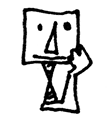
An instrument as old as time. Nowadays unjustly corrupted by souvenir shops and shopping centres. Yes indeed, I speak of the didgeridoo.
Suggested background music: Kate Bush, “The Dreaming”
It is not the synonym of the entire continent of Australia at all, only a part, or more specifically, the northern region of Kakadu. The didgeridoo still brings to mind a rather boggy terrain, because some Aboriginal Australians consider improper use








